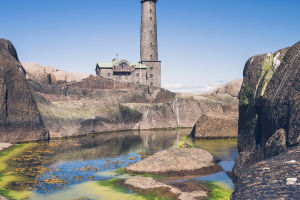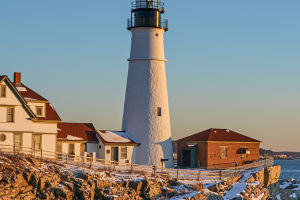Coastal erosion is the natural process by which coastal landforms, such as beaches, cliffs, and dunes, are worn away by the action of waves, currents, and tides.
This process can be exacerbated by human activities, such as coastal development and climate change, and can have significant impacts on both the natural environment and human communities.
Coastal erosion occurs as a result of the constant movement of water and sediment along the coastline.
Two main natural factors cause coastal erosion:
1. The enhanced dynamic action of the ocean.
Currents and waves generated during the movement of seawater are the main driving force causing coastal erosion.
Near-shore currents determine the direction of offshore movement of coastal sediment and become one of the important causes of coastal erosion.
Wave action is mainly manifested as sediment initiation and sediment transport.
2. Global warming causes sea level rise.
Global warming causes the average sea level in many areas to have a slowly rising trend relative to the land.
Since the shoreline profile will gradually adjust to the rising mean sea level, it will cause a slow erosion of the shoreline.
Short-term sea level rise will not cause coastal erosion, but long-term changes will induce or accelerate coastal erosion.
The relative rise in sea level leads to an increase in near-shore water depth, resulting in increased wave action reaching the shore and eroding the shore.
Waves and currents move sediment along the coast, depositing it in some areas and eroding it in others. This leads to changes in the shape and size of beaches, cliffs, and other features.
In areas where the coastline is already vulnerable, such as those with soft rock or cliffs, coastal erosion can be particularly severe.
This can lead to the loss of valuable habitat for wildlife, as well as the destruction of homes, businesses, and infrastructure.
In addition to natural processes, human activities can also contribute to coastal erosion. Coastal development, such as building houses and roads along the coastline, can disrupt natural sediment transport and increase erosion rates.
Climate change, which is causing sea levels to rise and storms to become more frequent and intense, is also exacerbating coastal erosion in many areas.
Efforts to mitigate coastal erosion include both hard and soft engineering solutions.
Hard engineering solutions, such as seawalls and revetments, aim to protect the coastline from erosion by physically blocking the movement of water and sediment.
Soft engineering solutions, such as beach nourishment and dune restoration, work to restore natural coastal processes and promote the buildup of sediment.
Overall, coastal erosion is a complex process that is influenced by a variety of natural and human factors.
As sea levels continue to rise and storms become more frequent and intense, coastal erosion will likely become an increasingly significant issue for coastal communities around the world.


